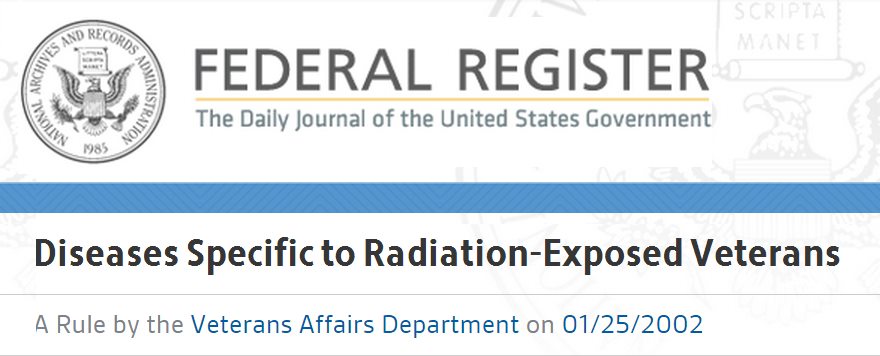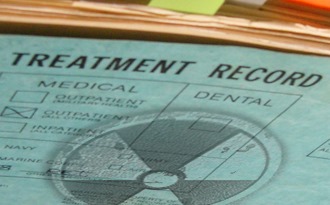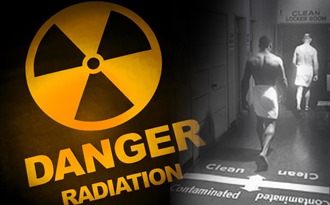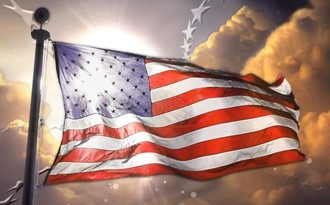National Association of Atomic Veterans
National Association of Atomic Veterans (N.A.A.V.) was founded in August, 1979 by the late Orville E. Kelly (Burlington, Iowa) for the purposes of allowing the U. S. Atomic Veteran Community to speak, with a single voice, to their inability to get a fair hearing related to their developing (radiogenic) health issues that may have been precipitated by their exposure to “ionizing” radiation while participating in a nuclear weapon test detonation, or a “post-test” event, such as the Enewetak Cleanup Veterans.
Atomic Veterans Were Silenced for 50 Years. Now, They’re Talking.
“No hype, no narration, no music, just the accounts of the people who were there.”
“The way your own government treats you, you don’t need a foreign enemy.”
“14,000 men?!?! The government needs to compensate these men. The VA needs to get them whatever they need. I have the highest respect for our Military, but there needs to care for men like these when they experience these horrors… Our Vets deserve the best care possible.”
Atomic Veteran Q Clearances
An Atomic Veteran’s spouse or offspring in a rare “need to know” position for medical necessity could be informed the clearance extended to and included them and that it came with the same substantial fines, consequences, including jail time.
Sacrifice
National Association of Atomic Veterans
U.S. Nuclear Testing Archive
The Nevada Field Office (NFO) of the NNSA opened the Coordination and Information Center – now referred to as the Nuclear Testing Archive to collect and make available all historical documents, records, and data dealing with radioactive fallout from all U.S. testing of nuclear devices. Collects and consolidates historical documents, records, and data for long-term preservation. Includes documentation on the detection and measurement of radioactive fallout and the related factors resulting from nuclear test device activities at the Nevada National Security Site (NNSS), the Trinity event, the Pacific Proving Grounds, and other on-continent test locations, as well as information on the health effects of radiation and various related scientific and technical studies and reports.
This collection of over 386,000 documents is available to the public through use of the Nuclear Testing Archive Public Reading Facility. Maintains more than 40,000 documents relating to Human Radiation Experiments by our predecessor, the Atomic Energy Commission (AEC), as well as over 346,000 documents dealing with the U.S. nuclear testing program. Can be accessed through OpenNet. Also maintains the complete DOE Human Radiation Experiments collection. These documents are available in full text retrieval through DOE Human Radiation Experiments site, above. Normal library services, such as assistance in locating documents, are provided at no charge. Other services, such as copying and proxy research by staff, will be provided according to a fee schedule.
The Nuclear Testing Archive has approximately 100 unclassified historical nuclear weapons testing videos. To obtain a list of videos, please contact the NTA at cic@nv.doe.gov or by phone at (702) 794-5106 or 1-877-DOE-FILM (1-877-363-3456).
| Nuclear Testing Archive: 755 East Flamingo Road Las Vegas, Nevada Open to visitors: 9:00 am – 4:30 pm Monday through Friday, except holidays. |
Questions or requests for services can be made through: U.S. Department of Energy NNSA/NFO Nuclear Testing Archive M/S 400 P.O. Box 98521 Las Vegas, NV 89193-8521 Phone: (702) 794-5106 or 1-877-DOE-FILM Fax: (702) 794-5107 Email: cic@nv.doe.gov |

Silence
Following a 1993 investigation by the Albuquerque Tribune, President Bill Clinton created a committee to look into U.S. human radiation experiments.Reporter Eileen Welsome’s six-year investigation revealed the names of 18 Americans who in the 1940s were injected with plutonium without their knowledge by government scientists.
The committee was asked to look into not only plutonium injections, but also other radiation experiments, such as one in which researchers fed oatmeal containing radioactive material to children at the Fernald State School in Massachusetts. Atomic veterans were not included in the study at first.Then, as the committee solicited public input, “overwhelmingly, the single largest group of people who responded right from the beginning were atomic veterans or their families,” said Ruth Faden, the committee’s chairwoman.“We were stunned, just stunned at the challenges” that atomic vets faced getting information “just to find out what happened to them,” she said.
When the committee’s findings were released in October 1995, he publicly apologized for the experiments.When the committee’s findings were released in October 1995, Clinton publicly apologized for the radiation experiments, and the veterans’ veil of secrecy was lifted soon after, in 1996.“And under our watch, we will no longer hide the truth from our citizens,” he said in his speech. He also vowed that the government would compensate those affected by the experiments.
The announcement was lost in other news on that day: A Los Angeles jury announced the verdict in the O.J. Simpson murder trial.CREDIT: Clinton Presidential Library and Museum
United States Cold War Research & Test Locations
U.S. Atmospheric Tests Chart & Operation Links
| Locations | Type | Years |
| Los Alamos | ||
| Pacific Proving Grounds | ||
| Coastal Oceanic Tests | ||
| Alaska | ||
| Marshall Islands | ||
| Nevada Proving Grounds | ||
| Downwinders | ||
| Oak Ridge | ||
| Hartford | ||
| Savannaha | ||
| Washington |
The Cold War cast a lingering shadow over generations of Atomic Veteran’s families. Discover more about our Cold War Atomic Veteran heroes.
National Association of Atomic Veterans
American Cold War Veterans Association
The Cold War Veterans Association fights for the rights of Cold War Veterans; To educate people as to why the Cold War was fought and won and why vigilance must be maintained; and to provide a fraternal community for men and women whose patriotism binds them together. Our goal is to ensure access to quality VA health care for honorably discharged Cold War Veterans, eliminate discriminatory treatment of Cold War Veterans by governmental entities and fellow Veterans’ Service Organizations, and sustain the continued growth of the Cold War Veterans Association.


